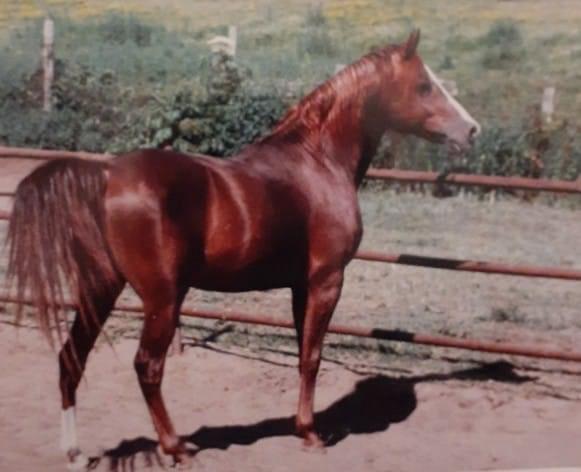How I like them
This is a recent shot of Shaykh Al Arab, courtesy of Lyman Doyle whose father Terry owns him. Shaykh is four years old this spring, so he hasn’t fully developed yet. He will become drier and more refined as he ages, and will reach full maturity around eight or even nine years old.

Here’s why: he has a short back, a strong coupling, a high tail set, a round croup, a thick tail bone, a long, strong hip, a strong loin, a muscled gaskin, a deep abdomen, a round barrel, ribs well sprung, a deep girth, long withers extending well into his back, a sloped shoulder, a broad chest, a long forearm, a short cannon bone, flat bone, and a naturally shiny coat. Overall, he exudes balance, harmony, tightness, condensed power, like a compressed spring, all parts fit together, nothing is loose, nothing is too much or too little.
That’s how I think Arabian stallions should look like. At least that’s how I like them, and how I will keep advocating for them tirelessly. The old-fashioned type (I balk at the meaning the term “classic type” has taken in today’s Arabian horse circles, so I say old-fashioned). It’s the type I grew up with, the type I admired in historical pictures from Crabbet, Kellogg, Maynesboro, Craver, and read about in the books of Anne Blunt, Gen. Eugene Daumas, and Robert Mauvy. It’s the real deal.
If you want “fast-fashion Arabians”, they are littering Instagram feeds, and this horse is not for you. He is part of the surviving 1 percent that is swimming against a mainstream of *sea-horses. This 1 percent is the only hope for bringing this breed back to what it always was — an improver of other equine breeds.
Mark my words: the pendulum effect is in full swing. Ten years from now, the ridiculous trend of “surreal” creatures that look like they were jolted with an electric cable, don’t know what a canter is, and whose individual body parts have been extended to such extremes that they no longer fit together in a single, harmonious, coherent whole, will collapse on its own, like a house of cards, without anyone doing anything. When that times comes, Shaykh and his likes will be the only ones left standing.
That type of horse is not unique to the bloodlines Shaykh comes from (he is a blend of Doyle, Babson, and Brown bloodlines, with a touch of Huntington and Davenport way in the back of the female side of the pedigree). Nor does it have to do with his strain (Ma’naqi Sbayli). This type can be found under all latitudes and in all lineages.
Below are several photos of asil horses of a similar type I have appreciated and featured on this blog over the years. From top to bottom: Moulouki (Tunisian and old French asil, Kuhaylan Ajuz), on the rangier side; Harras (Egyptian of EAO breeding, Hadbdan Enzahi), on the heavier side; Hamdaani (Bahraini, Hamdani Simri) on the drier side; Mokhtar (Syrian desert-bred, Shammar, Kuhaylan Krush); Regency CF (Davenport, Hamdani Simri) on the smoother side; and Shuwaiman Al Rais (Bahraini, Shuwayman Sabbah), who is almost a lookalike.






*Sea-horse: in DOW parlance, an Arabian horse with an extremely long, overarched neck, overly long, narrow and square muzzle, and no legs to speak of. The overall effect is silly but “cute”.

Amazing Horse!!. GREAT!! How true is It!!.Thanks Edouard!!